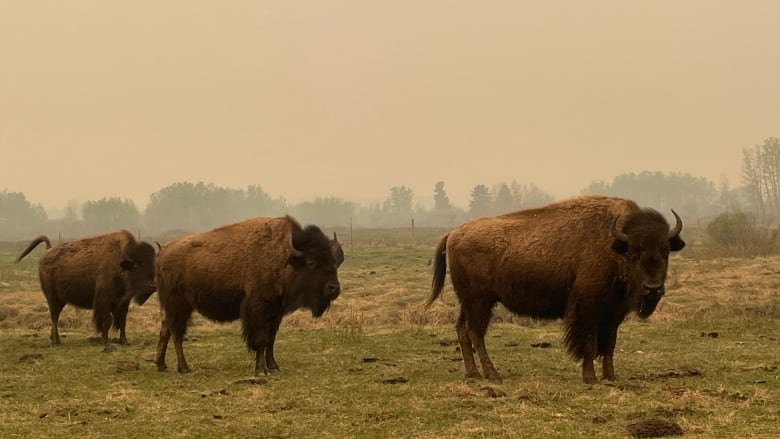N.W.T. bison anthrax outbreak grows to 27 dead animals
'Extremely rare' that humans become infected with anthrax from bison

Since last weekend, 27 bison have been found dead in a confirmed anthrax outbreak in the N.W.T.'s Slave River lowlands between Fort Smith and Fort Resolution.
The department of Environment and Climate Change (ECC) first became aware of the outbreak earlier this week when an aerial survey found 15 dead bison in the area.
"They're not in public access areas, which is helpful at this time," said Mike Westwick, spokesperson for ECC.
Harvesters should still be aware not to hunt bison in the area at this time, he says.
Westwick added that crews are investigating the sites where the bison were found and will treat the areas with chemicals to prevent spores from entering the soil.
They will also remove carcasses and burn them, or treat them with chemicals.
Bison can become infected with anthrax while grazing or taking dust baths.
Westwick said this is the ninth outbreak in the territory since 1965. About 60 bison died in an outbreak in Wood Buffalo National Park last year. More than 300 died in the territory's largest outbreak in 2012.
"The number one objective is rapid detection and disposal of dead infected bison and keeping people away from affected areas," said Westwick.
He added that humans contract infection from infected animals is "extremely rare".
That happens by inhaling spores, eating contaminated meat or having spores come in contact with skin, especially an open wound.
People on the land should not approach bison they see. If they do, they should check for white or bloody discharge from their nostrils or anus.
Residents can report dead bison at 867-872-6438.
Written by Francis Tessier-Burns with files from Marc Winkler












_(720p).jpg)


 OFFICIAL HD MUSIC VIDEO.jpg)
.jpg)



























































































